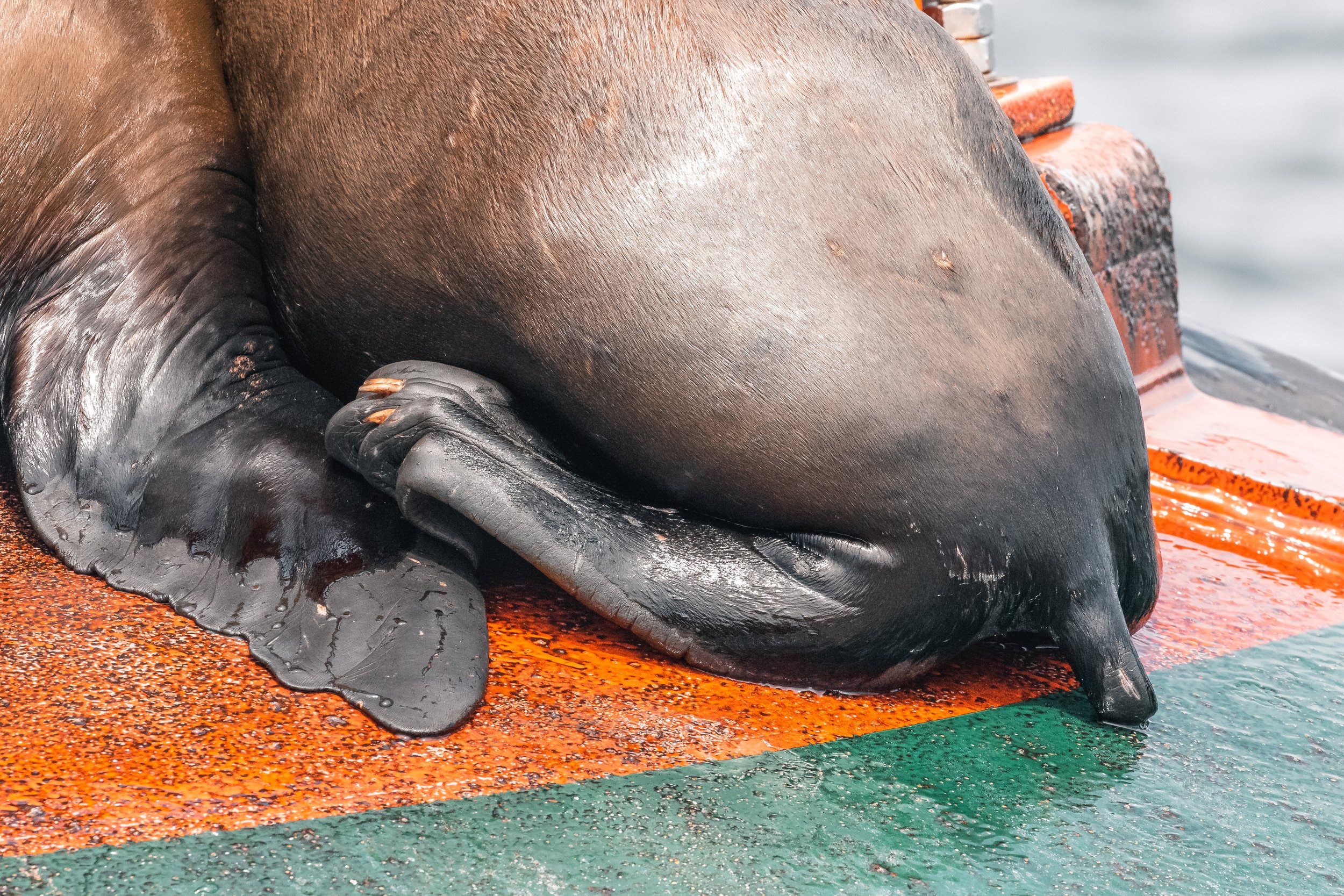July 18th 10:30 AM- Butcher boys down by Saturna Island
This morning our tour took us all the way south to the south-western side of Saturna island.
Here we found Jude (T049A2) and Amir (T065A3), two male killer whales who have been travelling together and have now been referred to as the Butcher boys because these two males have been out hunting and consuming a lot. Sometimes male orcas will come together and have a “bachelor party” where they travel, hunt, socialize, and even learn from each other. Then after some time together they will return to their mothers and the rest of their matriline. Amir, meaning prince in Arabic, has recently had a name change. He was only recently confirmed to be male and has previously been called Amira, which means princess in Arabic. This happened with Jude as well. He was previously called Judy until they confirmed him to be a male.
Male killer whales reach sexual maturity at about 15 years, and it is at this time when they go through a rapid growth spurt and during which the dorsal fin drastically increases in size, they are known as “sprouters” during this period. They only reach physical maturity around the age of 20 and they generally only successfully breed when they reach their physical maturity. Males on average are larger than females with males ranging between 6 - 7m (19.6 - 22.9ft) and females on average 5 - 6m (16.4 -19.6ft) with the average weight of males being 6600kg (14550lb) and females average weight being 4700kg (10141lb).
Maintaining this weight takes a lot of seals! Each orca needs to consume about 500 pounds of food every day. An adult seal weighs in at about 200 - 300 pounds meaning that they would need to eat a bunch of seals every day. Although it seems like you would only need to eat a couple, really it would need to be more than that since the orca don’t eat everything in the seals. They usually stick to the most energy-rich part of the seals, such as their blubber and muscle and they leave the rest behind for scavengers. Sometimes when we see them hunting there can be floating bits left over which the Gulls and Eagles use as a snack.
Jude and Amir weren’t hunting when we saw them today, but they were likely scavenging as they were spread out over about a kilometer. Over this distance they would be able to cover more ground, therefore having a higher chance of coming across a snack. They would still be able to communicate with each other, so if one found a seal the other would head over to help with the hunt!
This time they just travelled and we got to see their large dorsals cutting in and out of the water. Please enjoy these photos taken by our naturalists Rebeka Pirker and Janine Van Der Linden.
Amir (T065A3). Photo by Rebeka Pirker.
Amir (T065A3). Photo by Rebeka Pirker.
Photo by Janine Van Der Linden.
Photo by Janine Van Der Linden.
Photo by Janine Van Der Linden.
Harbour Seal Pup with mom. Look how squishy!! Photo by Janine Van Der Linden.
Photo by Janine Van Der Linden.
Photo by Janine Van Der Linden.
Turkey Vulture. You can tell from it’s featherless head. Photo by Janine Van Der Linden.
Bald eagles are easy to recognize by their white head and tail as adults. Photo by Janine Van Der Linden.
Photo by Janine Van Der Linden.
Photo by Janine Van Der Linden.
Photo by Janine Van Der Linden.
Photo by Janine Van Der Linden.
Photo by Janine Van Der Linden.
Photo by Janine Van Der Linden.
Photo by Janine Van Der Linden.
Sea Lion butt. Photo by Janine Van Der Linden.


















